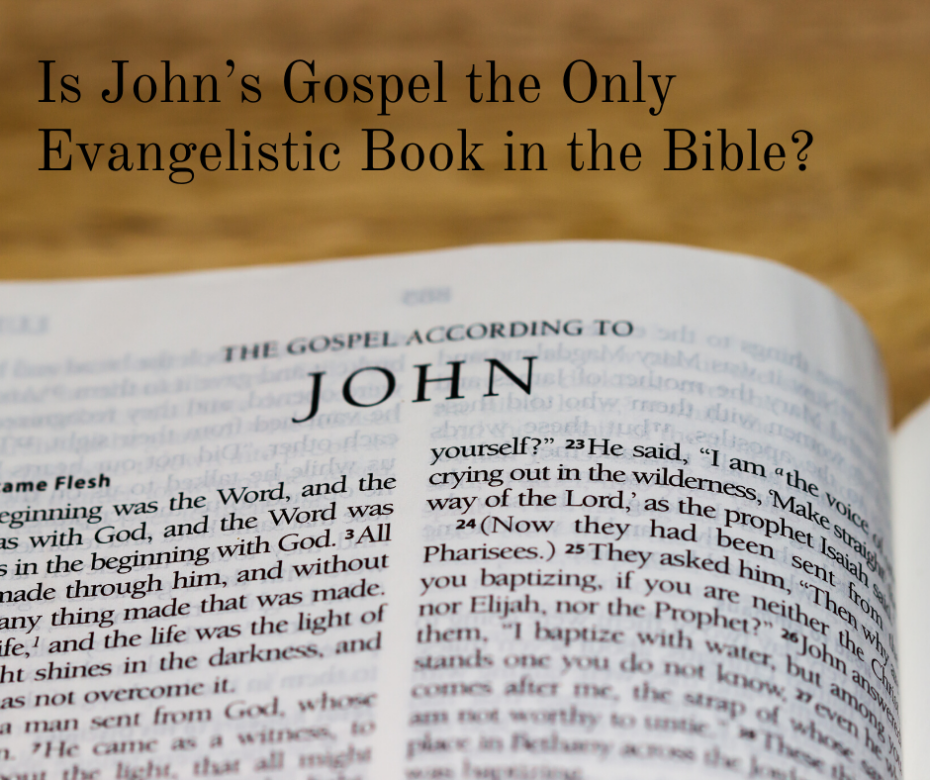“And truly Jesus did many other signs in the presence of His disciples, which are not written in this book; but these are written that you may believe that Jesus is the Christ, the Son of God, and that believing you may have life in His name.”
The following is a chapter in my upcoming book, One Hundred Faith-Alone Verses.
The Purpose of the Book Is to Lead the Readers to Believe in Christ
John presents eight named signs in his book. Each of those signs was “written that you may believe that Jesus is the Christ, the Son of God.” He is indicating that his readers do not believe that Jesus is the Christ, the Son of God. But John hopes to convince them that He is. The purpose of the Gospel of John is given here.
The expression “the Christ, the Son of God” occurs on only two other occasions in John’s Gospel: 6:69 and 11:27. The reference in John 11:27 is crucial since Martha is answering the question, “Do you believe this?” (John 11:26b). Jesus had just promised that all who believe in Him will be raised from the dead (11:25b) and will never die spiritually (11:26a).
When Martha answers, “Yes, Lord, I believe that you are the Christ, the Son of God, who is to come into the world” (John 11:27), she was saying why she knew what Jesus had just said was true. The Christ, the Son of God, guarantees to give glorified bodies and keep eternally secure all who believe in Him.
To believe that Jesus is the Christ, the Son of God, is to believe in Him for everlasting life. There is no difference in John’s Gospel between believing in (pisteuō eis) and believing that (pisteuō hoti).
While Martha does not explain what she means by “the Christ, the Son of God,” the context of the entire book makes it clear. In John’s Gospel “the Christ” is explained as “the Messiah,” that is, God’s Anointed One who is coming to rule over Israel and the world. The appositional expression the Son of God is a Messianic title in John. Compare John 1:49 Nathanael says, “Rabbi, You are the Son of God! You are the King of Israel!” Son of God equals King of Israel equals Messiah. Borchert agrees and claims that Nathanael links the title “Son of God” as being the coming King of Israel promised in the OT.
Morris comments, “Here he singles out two things in faith’s content. The one is that Jesus is the Christ, that is, the Messiah, the long-expected one. The other is that he is the Son of God. We take these two as more or less identical, but the Jews of the day did not.”
In other words, Martha was convinced that Jesus is the long-awaited Messiah, the King of Israel, and that as such, what He promises is true. Since He promises that all who believe in Him will live again and will never die spiritually, then she is certain that is true. The readers can and should believe that as well.
Whenever Anyone Believes in Christ, He Has Everlasting Life
The ending of the purpose statement is powerful: “that believing you may have life in His name.” The Greek verb translated as believing in the NKJV is a participle. It conveys the means by which one gains everlasting life: that by means of believing you may have life in His name.
Many English translations bring out the sense of means. The NIV, ESV, HCSB, NET, and LEB all read “by believing…” The NRSV has “through believing…”
Of course, the life spoken of in John 20:31 is everlasting life, the life mentioned throughout the Gospel of John. All who believe in Jesus, that is, all who believe that He is the Christ, the Son of God, have everlasting life in His name.
The sole condition of everlasting life, according to the purpose statement of John’s Gospel, is believing that Jesus is the Christ, the Son of God. Nothing else is required. Niemelä points out that this object of faith is sufficient: “John does not say that 99% of those who believe that Jesus is the Christ are born again. He asserts that 100% of the people who believe this content are regenerate.” If a person thinks that believing in Jesus is not enough, then he does not believe the saving message.


